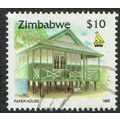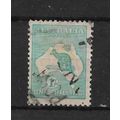Swanage, Dorset - Bay from miniature golf course - postcard c.1970s (Spanish)
- Condition : Used
- Dispatch : 2 Days
- Brand : None
- ID# : 197440292
- Quantity : 1 item
- Views : 100
- Location : United Kingdom

- Seller : justthebook (+1703)
- Barcode : None
- Start : Fri 04 Dec 2020 15:46:28 (BST)
- Close : Run Until Sold
- Remain : Run Until Sold
More Listings from This Seller view all
Seller's Description
- Postcard
- Picture / Image: The Bay from Miniature Golf Course, Swanage, Dorset
- Publisher: J. Perkins (Wholesale) Ltd. / Golden Shield (printed in Spain)
- Postally used: no
- Stamp: n/a
- Postmark(s): n/a
- Sent to: n/a
- Notes / condition:
Please ask if you need any other information and I will do the best I can to answer.
Image may be low res for illustrative purposes - if you need a higher definition image then please contact me and I may be able to send one. No cards have been trimmed (unless stated).
------------------------------------------------
Postage & Packing:
Postage and packing charge should be showing for your location (contact if not sure).
No additional charges for more than one postcard. You can buy as many postcards from me as you like and you will just pay the fee above once. Please wait for combined invoice. (If buying postcards with other things such as books, please contact or wait for invoice before paying).
Payment Methods:
UK - PayPal, Cheque (from UK bank) or postal order
Outside UK: PayPal ONLY (unless otherwise stated) please. NO non-UK currency checks or money orders (sorry).
NOTE: All postcards are sent in brand new stiffened envelopes which I have bought for the task. These are specially made to protect postcards and you may be able to re-use them. In addition there are other costs to sending so the above charge is not just for the stamp!
I will give a full refund if you are not fully satisfied with the postcard.
----------------------------------------------
Text from the free encyclopedia WIKIPEDIA may appear below to give a little background information (internal links may not work) :
*************
Swanage (/ˈswɒnɪdʒ/) is a coastal town and civil parish in the south east of Dorset, England. It is at the eastern end of the Isle of Purbeck and one of its two towns,[2] approximately 6 1⁄4 miles (10 km) south of Poole and 25 miles (40 km) east of Dorchester. In the 2011 census the civil parish had a population of 9,601.[1] Nearby are Ballard Down and Old Harry Rocks, with Studland Bay and Poole Harbour to the north. Within the parish are Durlston Bay and Durlston Country Park to the south of the town. The parish also includes the areas of Herston, just to the west of the town, and Durlston, just to the south.
The town, originally a small port and fishing village, flourished in the Victorian era, when it first became a significant quarrying port and later a seaside resort for the rich of the day. Today the town remains a popular tourist resort, this being the town's primary industry, with many thousands of visitors coming to the town during the peak summer season, drawn by the bay's sandy beaches and other attractions.
During its history the bay was listed variously as Swanawic, Swanwich and Sandwich,[3] and only in more recent history as Swanage.[4]
The town is located at the eastern end of the Jurassic Coast, a World Heritage Site. The town contains many listed buildings and two conservation areas – Swanage Conservation Area and Herston Conservation Area.[5]
While fishing is likely the town's oldest industry, quarrying has been important to the town and the local area since at least the 1st century AD.[6] During the time of the Roman occupation this industry grew, with the distinctive Purbeck marble being used for decorative purposes in buildings as far away as London. When the Romans left Britain, quarrying largely ceased until the 12th century.
The town is first mentioned in historical texts in the Anglo-Saxon Chronicle of 877. It is stated as being the scene of a great naval victory by King Alfred over the Danes: "This year came the Danish army into Exeter from Wareham; whilst the navy sailed west about, until they met with a great mist at sea, and there perished one hundred and twenty ships at Swanwich."[7] A hundred Danish ships which had survived the battle were driven by a storm onto Peveril Point, a shallow rocky reef outcropping from the southern end of Swanage Bay. A monument topped (historically incorrectly) by cannonballs was built in 1882 by John Mowlem to celebrate this event and is at the southern end of the seafront promenade.[8]
In the 12th century demand for Purbeck Marble grew once again. While Purbeck marble is not suited to external use, as it does not weather well, it is however strong and suitably decorative for use as internal columns. As such the stone was used in the construction of many large churches and cathedrals being built at the time.[9]
In contrast to the decorative Purbeck marble, Purbeck limestone, or more commonly 'Purbeck stone', has been used in construction locally since the early days of quarrying on Purbeck. Its use is less well documented as it was taken for granted as the default construction materials in the area. However, the arrival of more modern quarrying techniques in the 17th century resulted in an increase in production.[10] The Great Fire of London in 1666 led to a period of large-scale reconstruction in the city, and Purbeck stone was extensively used for paving.[11] It was in this time that stone first started being loaded upon ships directly from the Swanage seafront; before this time quarried stone had been first transported to Poole for shipping.[12]
The idea that Swanage could become a tourist destination was first encouraged by a local MP William Morton Pitt in the early 19th century, who converted a mansion in the town into a luxury hotel.[13] The hotel is noted for having been visited in 1833 by the (then) Princess Victoria, later to become queen.[14] The building was later renamed the Royal Victoria Hotel, now the building has been converted into flats and a bar and nightclub in the left and right wings respectively.
Listing Information
| Listing Type | Gallery Listing |
| Listing ID# | 197440292 |
| Start Time | Fri 04 Dec 2020 15:46:28 (BST) |
| Close Time | Run Until Sold |
| Starting Bid | Fixed Price (no bidding) |
| Item Condition | Used |
| Bids | 0 |
| Views | 100 |
| Dispatch Time | 2 Days |
| Quantity | 1 |
| Location | United Kingdom |
| Auto Extend | No |



 for 1 item(s)
for 1 item(s)

















